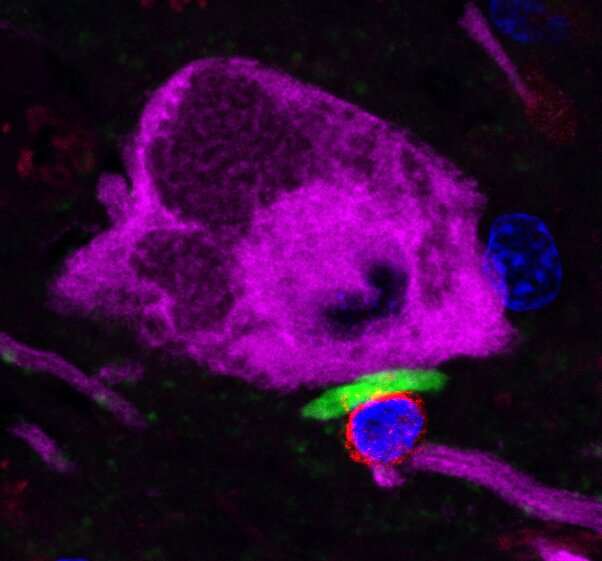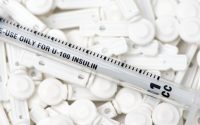Lewy body dementia exacerbated by immune response

T-cells respond to buildups of alpha-synuclein, the aggregated protein clumps that are a feature of neurodegenerative diseases including dementia with Lewy bodies and Parkinson’s disease (PD), according to a Northwestern Medicine study published in Science.
This autoimmune response proves harmful, and inhibiting signaling pathways that trigger the response may represent a future therapeutic target, according to David Gate, Ph.D., assistant professor in the Ken and Ruth Davee Department of Neurology and lead author of the study.
“These findings have established a detrimental role of the immune system in Lewy body dementias,” Gate said.
Intracellular clumps of debris—misfolded proteins, damaged lipids and pieces of partly digested organelles—are one of the hallmarks of Lewy body dementias (LBD). One major component of these clumps—the eponymous Lewy bodies—is a misfolded protein called alpha-synuclein.
Genetic mutations that interfere with immune function are associated with a greater risk of Parkinson’s disease, but the connection between T-cells and neuronal loss had remained unclear, Gate said.
In the current study, investigators analyzed cerebrospinal fluid (CSF) from patients with LBD and compared that to fluid from healthy aged controls. In patients with LBD, study authors discovered upregulated expression of CX-C Motif Chemokine Receptor 4 (CXCR4), a protein that normally regulates directing immune cells to tissues.
“It can be thought of as an antenna on the cell’s surface that receives signals from a cytokine called CXCL12,” Gate said.
Patients with LBD have an increased level of CXCL12, likely caused by alpha-synuclein. This leads T-cells to respond to the alpha-synuclein, secreting a toxic molecule called interleukin-17 which can damage neurons.
There are already drugs that inhibit CXCR4 and are used to treat blood cancers and HIV, and these could be used to interrupt this auto-immune response, according to Gate.
“We speculate that these drugs could be repurposed to inhibit pathological T-cell entry into the LBD brain,” Gate said.
Source: Read Full Article


